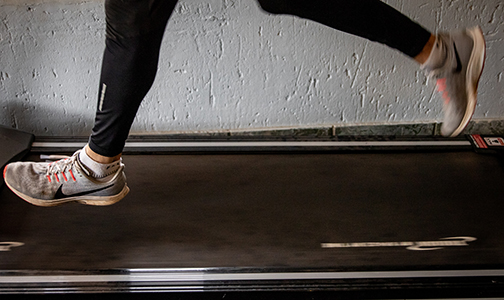- Immaculately Clean Facility
- Fully stocked changing rooms and showers
- FREE Body Scan
- FREE towel service
- Nutrition Coaching & Accountabiliy
- Expert coaches
Skip to content
People from Sacramento, CA, who come to ISC often want to improve their athletic performance. That requires work in every type of fitness, strength, balance, flexibility, and endurance. No matter what the exercise is, doing it correctly is vital. It makes the difference between success and failure and sometimes injury. Most people fail to realize that’s also true for running form. You may have been running since you were a toddler, but it doesn’t mean you’re doing it right and probably means you’ve picked up bad habits along the way.
Learning the proper breathing technique for running is essential.
Breath control is an intricate part of running. It affects your whole body, no matter what exercise you do. Focus on breathing properly when you first begin and don’t worry about how fast or far you run. First, learn belly breathing to improve your breathing technique by helping you learn to take deep nasal breaths. Breathe through your diaphragm. Now transfer that knowledge to your run. Run slowly as you focus on inhaling through your nose and exhaling through your mouth. Use the rhythm of your feet for your breathing rhythm. It helps reduce muscle tension and allows you to use your energy for running.
Prepare your core muscles for running.
The stronger your core muscles, the more strength and stability you have. It also improves your balance and reduces the potential for injury. Maintaining good posture as you run is also vital. Keep your spine erect and stretched through the crown of your head. Lean your chest slightly forward. Reduce your body tension that affects all body parts by stealing energy. Keep your hands relaxed and avoid clutching your fist. Let them brush your hips as you run. Raise your hands to chin high and then back toward the lower back. Don’t cross them over in front of your body in a punching style.
Start slowly.
Work on hip and ankle flexibility to prevent injury to your lower back, ankles, and knees. Focus mostly on form at first and gradually increase your intensity, duration, and frequency. Reduce your body stress by taking more steps per minute. Land softly using a forefoot strike that pushes you forward at the toes. Your thigh should be parallel to the ground. Don’t twist or rotate your trunk.
- If you feel muscle pain or believe you might have an injury, take a break. If the pain lasts longer or is reoccurring, see your healthcare professional.
- Get the right shoes for your gait and for the type of running you do. If you’re running on asphalt, you’ll use a different type of shoe than if you’re running on grass or rough terrain. Get advice from a running shoe expert when you buy.
- Don’t overstride. Your foot strike should be directly under your knee, not in front of it. It can lead to injury, particularly if you’re going downhill.
- Keep your feet low. Don’t lift them too far off the ground. That causes a bounce and burns more energy. You can modify your run to get in shape faster by making it a HIIT—high intensity interval training—session.
For more information, contact us today at Team-ISC



